Moving to Italy from UK – A Complete Guide

Thinking of swapping grey skies for golden sunsets?
Moving to Italy from the UK might be the adventure of a lifetime!
Embracing a culture where “dolce far niente” (the sweetness of doing nothing) is a celebrated way of life is a welcome thought for many!
Italy isn’t just a destination—it’s an experience.
Sure, the logistics of moving to Europe post-Brexit might seem daunting, but fear not!
Italy’s charm and beauty make every hurdle worthwhile.
From navigating the maze of visa requirements to settling into the local rhythm, there’s plenty to plan, but don’t worry; this guide is packed with all the insider tips and practical advice you’ll need to make your relocation as smooth as a scoop of gelato on a hot summer day.
Though the pandemic added a few extra hoops to jump through, Italy has bounced back!
Whether you’re dreaming of living in a rustic villa in Tuscany or a chic apartment in Milan, moving to Italy is more than just a change of address—it’s a whole new way of life.
Before you pack your bags, dive into our comprehensive guide created by White & Company, your one-stop shop for everything you need to know about making the big move from the UK to Italy.
Gathering all the experience we have picked up over our many years of moving – your move is sure to be made easier after reading this guide!
Ready to start your Italian adventure? Let’s get going.
Getting an Italian Visa
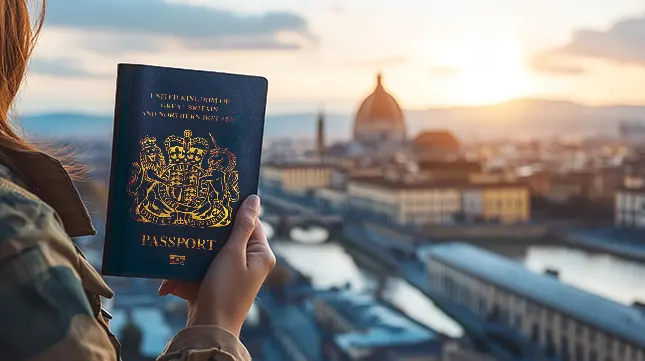
Getting an Italian Visa is the first step on your journey.
Many Brits dream about moving to Italy, but securing the proper visa is the first crucial step in making that fantasy a reality.
Whether planning to work, study, retire, or even start a business in Italy, navigating the visa process carefully is essential to ensure a smooth transition.
Italy offers a variety of visa types and choosing the correct one will depend on your specific circumstances.
For example, suppose you’re a non-EU citizen moving to Italy to find a job.
In that case, you’ll need a work visa, which requires a job offer and possibly a work permit under the “decreto flussi” or foreign workers quota system.
Work permits are available yearly and may be easier to obtain if your profession is in high demand.
If you’re self-employed, a student, or planning a working holiday, each situation demands a different visa.
Before you leave, you must apply for the correct visa at the Italian embassy or consulate in your home country.
The process can take time, so it’s wise to start early and consult your embassy for an estimated timeline.
But the visa is only the beginning.
If you plan to stay in Italy for more than 90 days, you’ll need a long-term visa (Type D or D-Visa).
This visa allows you to enter Italy, but within 8 days of arrival, you must apply for an Italian residence permit (permesso di soggiorno) to stay legally.
Resources like the IAM website are invaluable sources of more detailed information on which visa suits your situation and how to apply.
By taking the time to fully understand and follow the visa process correctly, you’re setting yourself up for a successful and stress-free move to Italy!
Weather in Italy
Italy’s climate is as diverse as its landscapes, making it a perfect destination for those who appreciate variety in their weather.
The summers, especially from June to August, are generally warm and dry.
In the south, particularly along the coast, the weather remains mild even in winter, with temperatures rarely dipping to freezing.
This makes southern Italy an excellent choice for those seeking a year-round temperate climate – this will be a welcome change for many of us who have to brave the cold British winters!
But if you ever find yourself yearning for a change, Italy’s northern regions, particularly the Alps, offer a stark contrast with their snowy winters.
These areas are a haven for ski enthusiasts and anyone who enjoys crisp, cold air in a mountainous landscape.
Even though global weather patterns can be unpredictable, with some years bringing less snow than others, the Italian Alps remain a picturesque winter destination and offer a welcome change for many.
Whether you’re drawn to the mild, sunny coastlines of Sicily and Sardinia or the snowy peaks of the north, Italy’s varied climate ensures that there’s always something to suit your preference.
Housing Costs in Italy
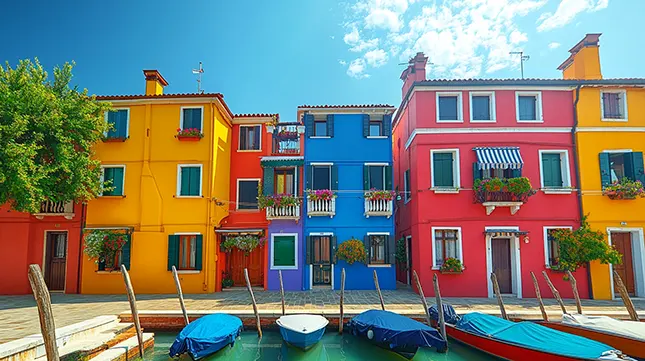
There are some wonderful places to live in Italy where you won’t have to break the bank to buy a home.
When UK expats think about buying a home abroad, France and Spain often come to mind.
Still, Italy is a hidden gem that offers surprisingly affordable real estate, especially in its charming rural areas.
While the allure of cities like Milan or Florence is undeniable, these bustling urban centres tend to have hefty property price tags.
However, if you’re willing to explore Italy’s picturesque countryside, you’ll find that regions like Umbria, Trapani, and Calabria offer a range of budget-friendly options that may seem very appealing.
In Calabria, located at the “toe” of Italy’s boot, you can find a variety of properties, from rustic farmhouses to modern apartments with stunning sea views, all at a fraction of the cost you’d expect in more popular European destinations.
Though property prices vary widely depending on the location and type of home, the average cost of buying a home in Italy is €372,000 (£316,832).
Before diving into a purchase, it’s crucial to do thorough research and consider factors like property taxes, renovation costs, employment opportunities in the area and legal fees.
Websites like Idealista and Gate-away are excellent resources for exploring current listings and getting a sense of what’s available in different regions.
Check out our in-depth guide for a more detailed look at the process of buying a property here – we have used our wealth of experience moving people from the UK to Italy to help you as best we can.
With the correct preparation, buying a home in Italy could be one of the best decisions you ever make.
What Does it Cost to Live in Italy?
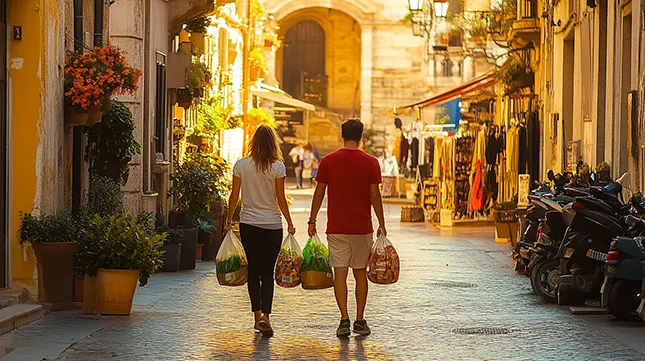
The cost of living in Italy can be far lower than in the UK if you budget correctly.
Understanding the cost of living is another aspect of the Italian lifestyle that UK expats must confront.
When considering moving to Italy, or any other country for that matter, you want to be sure you can maintain a comfortable lifestyle.
The day-to-day expenses in the country can vary significantly depending on where you choose to settle.
As expected, living in major cities like Rome or Milan will generally be more expensive than in rural areas or smaller towns.
However, even in these urban centres, many ex-pats find that the overall cost of living is lower than in comparable UK cities.
A great example is dining out in Italy, where you can find excellent value restaurants.
Meals at mid-range restaurants cost around 17% less than in the UK.
You’ll also find everyday luxuries like enjoying a cappuccino are significantly cheaper—well over 50% cheaper than in the UK.
Groceries such as fresh fruits and vegetables are typically up to 20% cheaper, and wine, a staple of Italian life, is nearly half the price compared to the UK.
On the other hand, some staples like dairy products and poultry may be more expensive in Italy, so it’s wise to adjust your shopping habits accordingly.
For detailed comparisons, websites like Numbeo offer insights into specific costs, helping you plan your budget effectively.
Overall, many expats will find that their monthly expenses in Italy are lower than in the UK, especially regarding housing, utilities, and dining out.
Italy can offer a fantastic new home, a more enjoyable lifestyle, and, if you’re strategic about where and how you live, a more affordable cost of living compared to the UK.
Italian Taxes – What You Need to Know
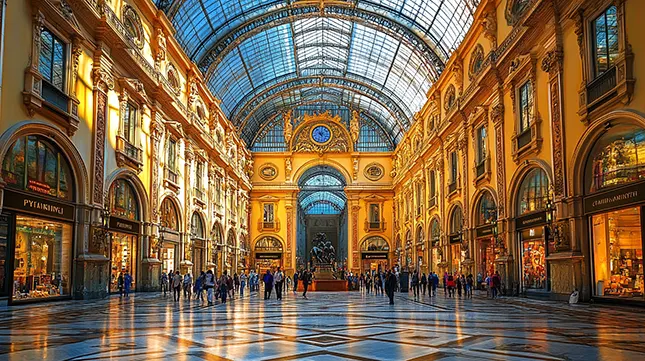
Just like in the UK, you need to ensure you are paying the correct amount of tax when living and working in Italy.
There’s no getting around it: Tax must be paid in all but a few locations worldwide.
If you’re a UK expat considering a move to Italy, understanding the local tax landscape is essential for your everyday life.
So, what do you need to do?
First on your list is obtaining a Codice Fiscale, Italy’s version of a National Insurance number.
This is your key to navigating Italy’s bureaucratic labyrinth, whether you’re paying taxes, buying property, or setting up utilities.
The good news? Getting a Codice Fiscale is free and easy.
Just visit any office of the Agenzia delle Entrate (Italian Revenue Agency), fill out the application form, and you’ll soon have your official tax code.
As a permanent resident, you’ll find that Italy’s tax system is extremely comprehensive.
You’ll be liable for income tax, social security contributions, corporate tax (if you’re setting up a business), and property taxes.
Don’t forget VAT currently stands at 22% for most goods and services, though it drops to 4% for essentials like books and pharmaceuticals.
If you’re employed, social security contributions can be hefty, with employers typically covering 28%–30% of your gross salary, while you contribute around 10%.
This is just the tip of the iceberg.
There are plenty of online resources that provide a deeper dive into Italy’s tax regulations.
Your Italian adventure still awaits you —but don’t forget to budget for the taxman!
Job Hunting in Italy

There are a range of in-demand jobs in Italy that will make moving here far easier.
While Italy may be famous as a retirement haven, many UK expats are drawn to its vibrant work opportunities.
If you plan to move to Italy from the UK, finding a job will likely be high on your to-do list.
Although the Italian job market can be challenging to navigate, it’s far from impossible.
Italy is increasingly opening its doors to foreign workers, particularly those in unskilled positions and startup ventures.
The government has significantly increased the number of work permits issued to non-EU nationals, making it a great time to explore your options.
To work legally in Italy, you’ll need a work visa (visto), and a residence permit (permesso di soggiorno).
If you have the skills, the demand for workers is high in the areas of IT, Engineering, Healthcare, Sales and Marketing, Hospitality and Tourism, and manufacturing and Logistics.
Additionally, speaking Italian can significantly enhance your employment prospects, especially if you’re fluent in Italian.
Finding a job shouldn’t be too daunting for those with sought-after skills to offer and a decent grasp of the language.
To kickstart your job search, check out resources like JustLanded and GoAbroad.com for opportunities tailored to expats.
Driving in Italy
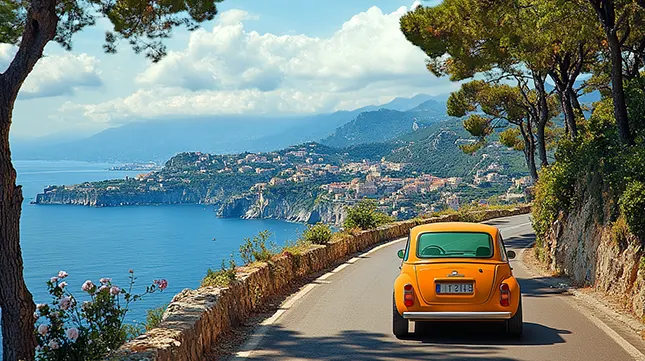
Driving in Italy is rather different than in the UK and may take some getting used to.
Driving in Italy is a unique and sometimes thrilling experience, especially for UK expats.
The country’s picturesque towns and remote villages often make a car essential for day-to-day living and exploring the breathtaking countryside.
But be prepared—driving in Italy is not for the faint-hearted.
Italian drivers are known for their assertive, sometimes aggressive, style, with what might seem like risky manoeuvres being part of the daily norm – so expect the unexpected!
The key to mastering this style of driving?
Stay alert, don’t take it personally, and embrace the ride!
If you plan to settle in Italy post-Brexit, there’s some paperwork ahead.
Post January 2021, UK expats can use their valid UK driving license for up to 12 months after establishing residency.
After that, you must convert your UK license to an Italian one.
This involves passing a theory test (in Italian), obtaining a learner’s permit, lessons, and then passing a practical road test.
Familiarising yourself with Italy’s driving laws, speed limits, and insurance requirements is crucial before hitting the road.
Resources like the AA’s guide to driving in Italy offer comprehensive advice on everything from fines to local driving etiquette.
Whether navigating narrow village streets or cruising along the autostrada, being well-prepared will make your Italian driving experience safer and more enjoyable.
Learning the Language

Learning Italian may seem like a daunting task but it will enhance your overall experience in the country.
Getting a head start on learning the language is more than just a nice-to-have—it’s fundamental to making your move a more enjoyable experience.
While you might get by in tourist-heavy areas with just English, if you’re venturing into the countryside or planning to start a business, communicating in Italian is the key to success.
Even basic tasks like shopping or setting up utilities outside of major cities can become challenging without a grasp of the local language.
Moreover, integrating into the community and truly experiencing Italian culture requires more than just a phrasebook.
For UK expats, the sentiment is clear: if you’re living and earning in Italy, learning the language is a sign of respect and commitment to your new home.
Fortunately, there are plenty of resources to help you get started.
Online language courses are a great way to begin, and once you arrive, you can often find free or low-cost classes at local schools, colleges, or even your town hall.
Learning Italian might feel like a “sink or swim” situation at first, but immersion is the best teacher!
By surrounding yourself with the language, you’ll improve faster than expected.
For additional resources, check out language apps like Duolingo or local classes offered in your area once you arrive – learning with the locals may require a base level of understanding but can be an excellent way to build you confidence and meet some friendly locals.
Moving Your Belongings to Italy

It is essential to select a reliable removals company to get your belongings safely to Italy.
As you leave the UK behind and start your new life in Italy, one of the final but not least tasks is arranging the transport of your personal belongings.
If you’re moving permanently, it’s often more economical and comforting to bring your cherished possessions with you, rather than buying everything anew in Italy, which can be pretty costly.
Choosing the right international removal company is key to ensuring your belongings are handled with the care and professionalism they deserve.
With so many companies vying for your business, it’s essential to select a reputable one with a proven track record and one that is a member of the industry regulators BAR (British Association of Removers).
White & Company has been a trusted name in the industry for over 150 years.
We are founder members of BAR and bring a wealth of experience in European and International moves.
The cost of your move will largely depend on the volume of items you plan to take.
We can arrange for a surveyor to visit your home or conduct a virtual survey to assess the volume.
After that, you’ll receive a detailed quotation.
When the big day arrives, a professional removal team will carefully pack, wrap, and prepare your belongings for their journey by road or sea to your new home in Italy.
Upon arrival, they’ll unload and place your items in the appropriate rooms, saving you from the heavy lifting and stress.
Get in touch with us today for more information or to book a free survey.
This final step in your relocation process will help ensure a seamless transition to your new life under the Italian sun.
Customs and Import Regulations

It is important that you understand Italy’s customs regulations before moving.
Understanding and familiarising yourself with customs regulations can be intimidating.
Having a grasp of these rules is a must for UK expats to avoid unexpected duties and taxes.
When importing your household goods, make sure you’ve owned and used them for at least six months; otherwise, they’ll be subject to import hefty fees and or taxes.
Newer items, like appliances, are automatically flagged for duties, so consider purchasing these after you’ve settled in Italy.
It’s also vital to be aware of strictly prohibited items, including narcotics, explosives, and even specific quantities of alcohol.
These items are non-negotiable and could land you in serious trouble if included in your shipment.
When you decide to move with White & Company, we will handle most of the paperwork, so all you need to do is call if you have a query!
For detailed guidance, check out the official Italian customs website here.
Healthcare in Italy

Italy is known for its good healthcare and extremely high life expectancy.
Italy boasts one of the highest life expectancies in the world, thanks to its exceptional healthcare system.
As a British expat, you’ll be pleased to know that Italy’s public healthcare service, the Servizio Sanitario Nazionale (SSN), provides comprehensive coverage for most medical needs, often at little to no cost.
The system is a blend of public and private services, with the state subsidising a significant portion of medical expenses, making healthcare both accessible and affordable to all.
However, many Italians and expats alike invest in private health insurance for faster access, more personalised care, and a generally more comfortable experience.
While private care offers clear advantages, it can be pricey, so the level of coverage you select will determine the final cost.
You’ll need a Tessera Sanitaria (Italian Health Insurance Card) to access Italy’s public healthcare.
Visit the official government website on the subject to learn more about Italy’s healthcare system and your entitlements.
Education and Studying

Italy offers students an excellent range of school, catering to all ages.
Relocating to Italy with children involves ensuring they receive a high-quality education.
Fortunately, Italy offers a range of educational options to suit the needs of expat families, so there will be great options for you regardless of where you live.
Italy’s public schools can be an excellent choice for younger children.
These schools immerse students in the Italian language and culture, which smaller children, especially those under 4 or 5, can easily adapt to.
Their natural ability to absorb new languages makes this an attractive option, allowing them to integrate quickly and thrive in their new environment.
However, an international school may be a better fit if you’re moving with older children.
International schools in Italy provide continuity with the curriculum they’re familiar with from the UK, while also offering a multicultural environment where learning a new language is encouraged but not overwhelming.
These schools often have students from various backgrounds, allowing your children to connect with peers who may speak their native language, making the transition smoother.
You can visit the Italian Ministry of Education’s official website for more detailed information on the educational system and available options.
The first university was started in Italy a thousand years ago!
Today, university-aged students are spoilt for choice, with many renowned institutions dotted nationwide.
From toddlers to adults, Italy has an impressive education track record.
Opening an Italian Bank Account
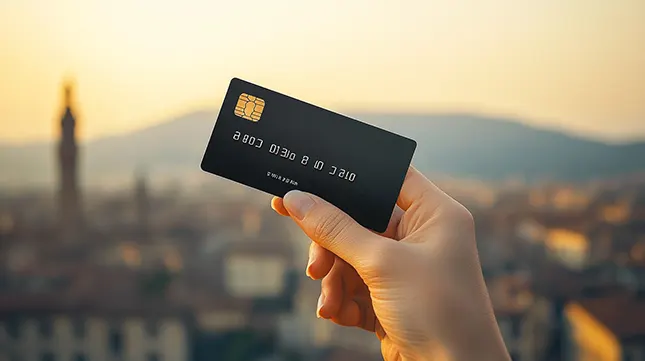
Opening an Italian bank account may be easier than you think.
With so much bureaucracy already to consider, you will be pleased to hear that opening an Italian bank account is a relatively straightforward process.
The good news is that you can start this process before you even arrive, saving time and money.
Setting up your account from the UK allows you to bypass steep currency exchange rates and ensures you’re financially ready from day one.
While it can be initiated online, be prepared to visit a local branch in Italy to complete the necessary identity verification.
Two of Italy’s most reliable banks, Unicredit SpA and Intesa Sanpaolo, are popular for expats seeking to establish a local account.
These banks offer a range of services tailored to international clients, making your financial transition smoother.
Exchange Rate
Securing the best exchange rate is crucial when moving to any new country, but is particularly important if you’re selling your UK home to fund a property purchase in Italy that involves transferring large sums of money.
A well-timed transfer can save you thousands, but with rates constantly fluctuating, how do you know when the time is right?
This is where a reputable money transfer or financial exchange company comes in.
They can monitor the market and advise you on the optimal time to move your money, ensuring you get the most for your pounds.
Keep in mind, however, that there are limits on how much you can transfer—currently up to €1.2 million—and fees will apply depending on the amount.
Rules for Importing Your Pet

Make sure you follow all of the rules to ensure you pet is able to accompany you on your Italian adventure.
Moving to Italy with your beloved pet is possible, but will require well-considered preparation to comply with Italy’s strict pet import regulations.
Failure to meet these requirements could mean leaving your furry friend behind, a heartbreaking scenario that no one wants to face!
But how can you avoid this situation?
First and foremost, your pet will need a valid pet passport, which you can obtain through your vet in the UK.
Additionally, your pet must be microchipped and up-to-date on all required vaccinations, including the crucial rabies vaccine—without it, your pet won’t be allowed to enter Italy.
Before you go, ensure you have all the necessary health certificates.
These documents prove that your pet can travel and has met all of Italy’s health standards.
Following these steps ensures a smooth transition for your pet to join you in your new Italian adventure.
For detailed information, head over to the official Italian Ministry of Health website.
Are You Ready to Get Moving to Italy from UK?
Moving abroad can be an emotional rollercoaster, filled with excitement, anticipation, and a touch of apprehension.
Stepping into the unknown is never easy, but that’s where White & Company’s Italian Removals service comes in—to make your transition to life in Italy as easy as possible.
While we can’t manage all your emotions, we can guarantee that your personal belongings will be handled with the utmost care and professionalism.
With over 150 years of experience, White & Company has earned its reputation as the go-to international removal firm, trusted by clients worldwide.
As BAR, FIDI, and OMNI members, our expertise in global relocations is unparalleled and highly regulated.
From our strategically located teams across the UK, we meticulously pack and prepare your valuable, fragile, and bulky items for their journey to Italy, ensuring your belongings arrive safely and on time.
Ready to embark on your dream move?
Contact us today, fill out a quick quote form, or chat with our bot, and let White & Company take the hassle out of your relocation to Italy.

Max is a seasoned writer and blogger in the real estate and home moving sectors, as well as a knowledgeable source of information for expatriates living and working abroad. His detailed insights have helped thousands of people move and live abroad with greater simplicity and ease.
Posted in: News
Leave a Comment (0) ↓



